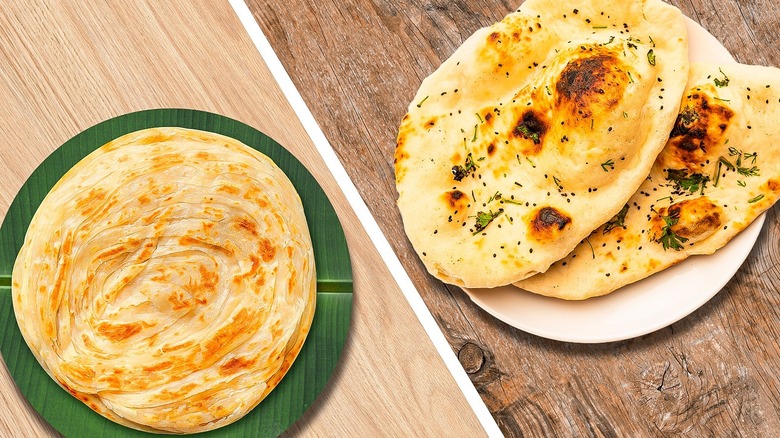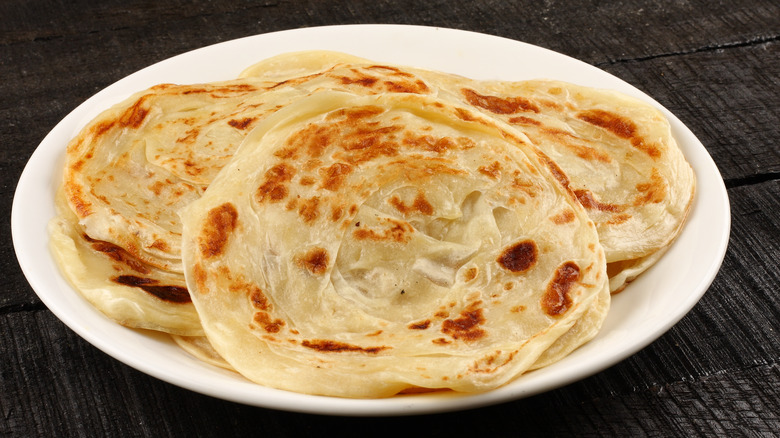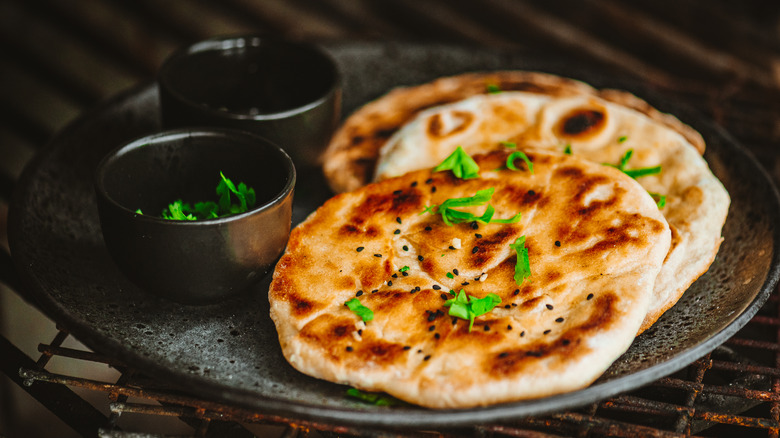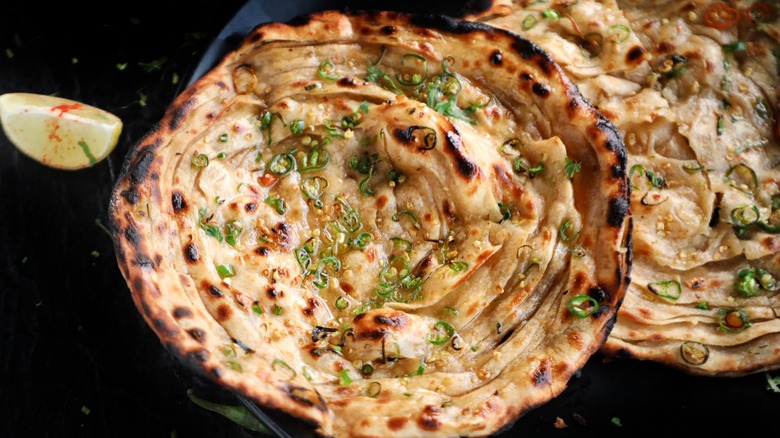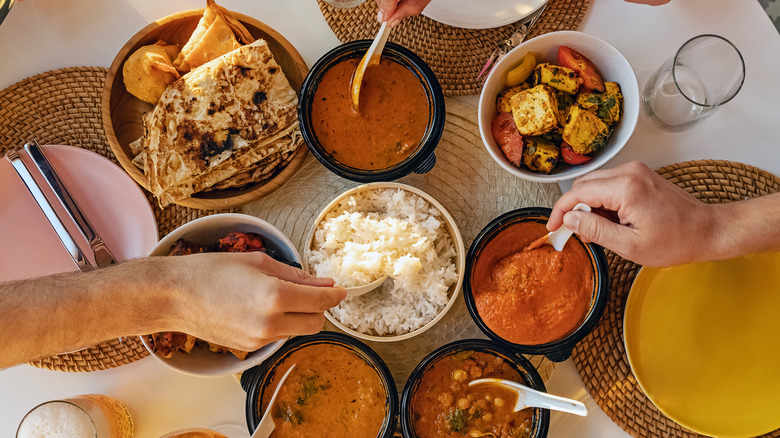The Important Differences Between Paratha And Naan
Even with the wide variety of mouthwatering cuisines in the world, there are few meals more comforting than a spread of Indian dishes. With warm, flavorful spices, hearty vegetables and proteins, and rich, indulgent sauces, it is no wonder that these dishes are beloved around the world, especially when they are accompanied by a tall, steaming stack of fresh flatbread. While these breads may serve a similar purpose — that is, to help enhance and mop up every ounce of deliciousness on your plate — they are each unique.
Naan and paratha, two of the most common and celebrated options around South Asia, are examples of how these breads come with their own ingredients, cooking techniques, and histories. Knowing the distinctions between them and their backgrounds can help you appreciate them even more deeply whenever passing them around the dinner table and dipping them into some hot chana masala, lamb biryani, or chicken korma.
What is paratha?
Paratha is a simple, unleavened flatbread made from just five common ingredients: flour, salt, water, oil, and ghee — also referred to as clarified butter. It is beloved across many cultures in South Asia, and both North India and South India will often claim it as a dominant bread in many daily lives. This bread can be served at nearly any time of day, performing as a breakfast-time staple as well as a sweet after-dinner dessert.
When eaten in a savory application, it can be enjoyed as is or stuffed with fillings. One popular filling is a mix of potatoes and various spices, creating a dish called aloo paratha. In the context of a dessert, however, paratha is often served with toppings like fresh butter, silky cream, or a dollop of tangy yogurt and finished off with a generous drizzle of caramelized sugar.
What is naan?
Naan is likely a very recognizable side dish for many, as it is the go-to bread served at Indian cuisine restaurants far and wide, especially in the United States. The recipe for naan, as a leavened flatbread, is a bit more involved and ingredients include flour, water, sugar, yeast, milk, and yogurt. It is then brushed with ghee after cooking for a shiny, flavorful finish. It is also often topped with fresh herbs or aromatics such as garlic or onions.
This flatbread is extremely versatile and is most often served in savory contexts. Like paratha, naan can also be served with a host of different dishes, from tikka masala to dal makhani, and it can be filled like a pocket, similar to pita. A well-known style of stuffed naan is called kulcha, where the bread's interior overflows with options such as potatoes, onions, or even a blend of nuts and raisins. Common ingredients to serve with naan include cooked or fresh vegetables as well as different types of meat.
Paratha is flaky
A defining feature of paratha is the manner in which it is cooked. When paratha dough is made, it is stretched and folded many times to create layers, much like the laminated dough one would find in a croissant. When it comes time to add the heat, the dough is then fried in a pan called a tawa along with more oil or butter. This is why paratha has a flaky, crispy texture and a rich, comforting flavor that you can't help but keep coming back for.
Naan, on the other hand, is cooked using an entirely separate method. Naan dough is only shaped once, then baked in a tandoor oven, which is a clay oven fueled with wood or charcoal. As such, naan is imparted with a crispy bottom and slight char. Baking also allows for this yeasted dough to rise slightly, which is why naan has a fluffy, chewy texture, perfect for soaking up sauces.
Naan is associated with special gatherings
While both paratha and naan have become relatively ubiquitous in South Asian dining, their backgrounds could not be more different. Historically, naan was considered a delicacy. This was because of the high amount of time, effort, and ingredients that go into creating this kind of bread. Naan was primarily accessible only to royalty and other folks in high society. It was only at the end of the 18th century that the delight that is naan was introduced to a wider audience. Even today, fresh-baked naan is more likely to be a luxury present during a night out versus an element of home cooking.
Meanwhile, the widespread enjoyment and many iterations of paratha demonstrate its reputation as a household staple for every echelon. In fact, it is thought that parathas originated as a method to recycle scraps from other types of bread, placing its roots in resourcefulness rather than luxury. This does not mean paratha is overlooked, but rather that it's celebrated as a convenient and familiar item that most meals would not be complete without.
